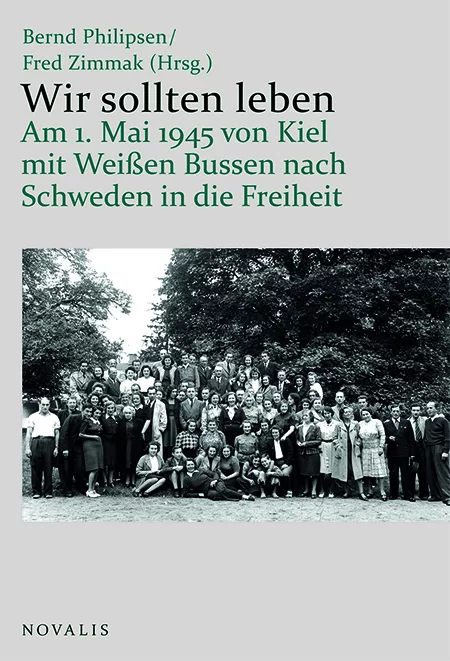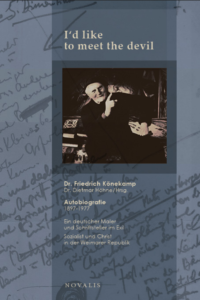Beschreibung
Wir sollten leben
Am 1. Mai 1945 von Kiel mit Weißen Bussen nach Schweden in die Freiheit
Bernd Philipsen /Fred Zimmak (Hrsg.)
Am Morgen des 1. Mai 1945 rollten weiß gestrichene und mit dem Rot-Kreuz-Emblem versehene Busse und Krankenwagen durch das Tor des Arbeitserziehungslagers Kiel-Hassee. Sie gehörten zum Kontingent der von dem schwedischen Grafen Folke Bernadotte initiierten Rettungsmission, um in der Endphase des Zweiten Weltkrieges möglichst viele KZ-Häftlinge aus den Händen der SS zu befreien und nach Schweden in Sicherheit zu bringen. Die Rettungsfahrzeuge nahmen in dem Kieler Lager 153 jüdische Häftlinge auf, Menschen, von denen die meisten eine mehrjährige Odyssee durch Ghettos und Lager durchlitten hatten. Diesem Transport und – vor allem – den damals ausgezehrten und verzweifelten Menschen widmet sich dieses Buch. Es spürt an Hand von Dokumenten und Zeitzeugenberichten den Lebensläufen der nach Schweden geretteten Holocaust-Überlebenden nach und schildert ihr Leben nach dem Überleben. Es sind individuelle Überlebensgeschichten von Menschen, die die Hoffnung auf ihre Befreiung vom Nazi-Joch bereits aufgegeben hatten und ungläubig in die Rettungsfahrzeuge eingestiegen waren. „Also sollte ich leben“, schrieb Johanna Rosenthal aus Potsdam nach dem glücklichen Ende ihres Martyriums in einem schwedischen Flüchtlingsheim nieder. Wir sollten leben – das war in Anlehnung an Johanna Rosenthals Ausspruch die Botschaft der in Kiel befreiten Frauen, Männer und Kinder, die in Schweden ihren Lebensmut und ihr Selbstbewusstsein zurückgewonnen hatten.
Short English presentation of the book Wir sollten leben – Am 1. Mai 1945 von Kiel mit Weißen Bussen nach Schweden in die Freiheit. By Bernd Philipsen and Fred Zimmak (Publisher). 282 pages, numerous illustrations.
We were meant to live, Johanna Rosenthal wrote. There was no other way to understand being tortured, continually standing on the precipice of death at the hands of Nazi sadists – and yet not dying. Inexplicably one day, the gates of the concentration camps opened, and 150 prisoners of the Kiel Nordmark camp walked onto the White Buses, ever fearful that it was another Nazi trick, they found that they were now in the free country of Sweden.
On May 1st, 1945, the Danish vehicles picked the prisoners up one week before the Nazi surrender. They were part of a larger rescue project of the Red Cross. A Norwegian-Swedish initiative to free as many concentration camp prisoners as possible out of the clutches of the SS, the rescue was crucial to the survival of a least a few human beings. As the failure of the Third Reich became inevitable, the SS simply began to kill as many Jews and concentration camp prisoners as possible before the Nazi surrender made it impossible.
Folke Bernadotte, a member of the Swedish royal family and an executive of the Red Cross, rose up in opposition and set the rescue in motion.
Norbert Masur, of the Jewish World Congress, negotiated with Heinrich Himmler himself and somehow convinced him to free thousands of concentration camp prisoners. I Was Meant to Live tells the story of the journey of the 153 battered, grieving, exhausted people transported from Kiel.
The authors have managed to find some of the families of the group from Kiel, and new material and photographs have emerged that vividly bring the story to life. From their extensive research in the Swedish National Archive and a small local archive in Pattburg on the German-Danish border, to people with new information in Argentina, the United States and Australia, to papers left in the refugee places that the prisoners were first brought to, the real story, the human story of individuals both determined and touched by fate, is told through their own eyes.
‘It was like a miracle,” seventeen year old Siegfried Ziering said. The camp gates opened! His mother Cilly, brother Herman and 150 other prisoners walked with him through those gates, all the while wondering if they would be shot or moved to a death camp or some other horror that their torturers would enact. They had been through so much suffering in the ‘Riga Hell’ to which they’d been assigned, dragged with the retreating Germans, who would not release them even to save themselves, the idea of freedom was too hard to imagine.
Joanna Rosenthal recounted in a letter to her Rabbi, her yearlong odyssey through ghettos and concentration camps, roll calls, selections and transports in the midst of military maneuvers, always on the threshold of death. ’Through pure chance, I did not stand next to my girlfriend’ in the bombing of Libau, where they worked as slave labor, ‘and I survived and she was dead. Thus,’ she wrote, ‘I was meant to live.’
It is the recovery of these personal memoirs told in their own voices that are particularly valuable and interesting.
Siegfried Ziering was reunited with his family in London and later emigrated to the United States, where he made a name for himself as a scientist, an entrepreneur and a philanthropist. Tormented throughout his life by nightmares, he tried to process the horrors he’d experienced by forming them into a play, where his direct experiences were told and enacted.
The majority of people rescued in Kiel and taken to Sweden, later emigrated to America in the hope of building a new life. Some stayed in Sweden, like the parents of Fred Zimmak, the coeditor of I Was Meant to Live. Others found new homes in Australia, Columbia, Israel and Argentina, and a few returned to Germany. Out of the shared experience of the men and women freed from Kiel, there were quite a few marriages and many life-long friendships.
Published in Germany in 2020, I Was Meant to Live quickly became the publisher’s best-selling publication. It is a personal and intimate recounting of the hopes, sufferings, strategies, moments of good fortune and bad that the people from Kiel have left for us, and through which, in our own time, questions of morality and survival that we struggle with, can find guidance, warning, hope and understanding.
(D) € 19,80 (A) € 20,20 (CH) 23,– SFr
ISBN 978-3-941664-71-5
282 Seiten, hardcover
mit zahlr. s/w Abbildungen
1. Aufl.
Zusätzliche Informationen
| Gewicht | 800 g |
|---|




